
Membranes
Scope & Guideline
Pioneering breakthroughs in membrane research and applications.
Introduction
Aims and Scopes
- Water Treatment Technologies:
The journal covers advancements in membrane technologies for water purification, including reverse osmosis, nanofiltration, and ultrafiltration, focusing on their efficiency and effectiveness in removing contaminants. - Biomedical Applications:
Research on the use of membranes in medical applications, including drug delivery systems, tissue engineering, and dialysis, is a significant focus area. This includes the development of biocompatible membranes and their interactions with biological systems. - Energy Conversion and Storage:
The journal publishes studies related to the use of membranes in energy applications, such as fuel cells, battery technologies, and carbon capture, emphasizing the role of membranes in enhancing energy efficiency. - Membrane Material Science:
Research on the synthesis and modification of membrane materials, including polymeric, ceramic, and composite membranes, is a core area. This includes studies on the physical and chemical properties of membranes and their performance in various applications. - Fouling and Membrane Performance:
The journal addresses issues related to membrane fouling, including the mechanisms of fouling, strategies for mitigation, and the impact of operating conditions on membrane performance.
Trending and Emerging
- Sustainable and Green Membrane Technologies:
There is a growing emphasis on the development of eco-friendly membranes and processes, including the use of biodegradable materials and sustainable fabrication methods, driven by the global push for sustainability. - Advanced Hybrid Membrane Systems:
Research is increasingly focused on hybrid systems that combine multiple technologies (e.g., membrane bioreactors, forward osmosis) to improve performance and efficiency in wastewater treatment and resource recovery. - Nanomaterials in Membrane Technology:
The incorporation of nanomaterials into membrane structures is gaining traction, with studies exploring the enhanced properties and functionalities they can provide, such as improved separation efficiency and antifouling characteristics. - Smart Membranes and Responsive Systems:
Emerging research on smart membranes that can respond to environmental stimuli (e.g., pH, temperature) is on the rise, with potential applications in drug delivery and adaptive filtration systems. - Membrane Technology for Resource Recovery:
There is an increasing trend towards using membrane processes for the recovery of valuable resources from waste streams, such as nutrients and energy, showcasing the potential of membranes in circular economy applications.
Declining or Waning
- Traditional Membrane Separation Techniques:
While classic methods such as microfiltration and ultrafiltration remain important, there has been a noticeable shift towards more advanced techniques such as hybrid and membrane-assisted processes, indicating a decline in the focus on traditional separation methods. - Single-Use Membrane Technologies:
Research on single-use membrane applications has decreased as the industry moves towards sustainable and reusable solutions. The emphasis on circular economy practices is replacing the focus on disposable systems. - Low-Temperature Applications:
There appears to be a waning interest in studies related to low-temperature membrane applications, as research is shifting towards high-performance membranes that can operate efficiently under a broader range of temperatures. - Basic Membrane Characterization Studies:
While foundational studies are essential, there is less emphasis on purely theoretical or basic characterization work without practical applications, as the journal increasingly favors research with direct applications or implications for technology. - Use of Conventional Materials:
The focus on conventional membrane materials is declining as researchers explore novel materials, such as nanomaterials and biopolymers, for enhanced performance and sustainability.
Similar Journals
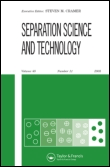
SEPARATION SCIENCE AND TECHNOLOGY
Innovating Techniques for Tomorrow's ChallengesSEPARATION SCIENCE AND TECHNOLOGY is a distinguished journal published by Taylor & Francis Inc, offering critical insights and advancements in the fields of chemistry and chemical engineering. With an ISSN of 0149-6395 and E-ISSN of 1520-5754, the journal spans a rich history from 1978 to 2024, providing a platform for scholarly articles that delve into innovative separation processes and technologies. Notably recognized in the 2023 category quartiles, the journal ranks Q2 in Chemical Engineering and Chemistry, alongside Q3 in Filtration and Separation and Process Chemistry and Technology, reflecting its significant impact and relevance in these research areas. With an impressive Scopus ranking, including a rank of #10/19 in Filtration and Separation, SEPARATION SCIENCE AND TECHNOLOGY is crucial for researchers and professionals seeking to enhance their understanding of separation techniques and applications. Although it operates under a subscription model, its contributions remain indispensable for the advancement of knowledge and technologies in separation science.

Membranes and Membrane Technologies
Elevating Knowledge in Membrane Science and TechnologyMembranes and Membrane Technologies is an innovative journal dedicated to advancing the fields of chemical engineering, chemistry, and materials science through the exploration of membrane science and technology. Published by PLEIADES PUBLISHING INC, this journal offers vital insights into the efficient design, synthesis, and application of membranes across diverse industries, aiming to enhance water treatment, energy generation, and various separation processes. With an ISSN of 2517-7516 and an E-ISSN of 2517-7524, the journal is recognized for its impactful contributions, holding a Q3 category ranking in multiple fields as of 2023. Researchers and professionals will find a wealth of open-access articles that promote the sharing of knowledge and foster collaboration in this rapidly evolving domain. As it converges its mission from 2019 to 2024, Membranes and Membrane Technologies remains an essential resource for those committed to pushing the frontiers of membrane research and application.
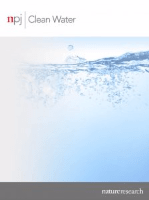
npj Clean Water
Transforming water challenges into actionable insights.npj Clean Water, published by NATURE PORTFOLIO, is a premier open-access journal dedicated to advancing the field of water science and technology. Since its launch in 2018, this innovative publication has quickly established itself as a leading platform for original research and policy discussions concerning clean water access and quality. With an impressive impact factor and categorized in the Q1 Quartile across multiple environmental science disciplines—including management, monitoring, pollution, and waste management—npj Clean Water stands out for its rigorous peer-review process and commitment to disseminating high-quality research. Researchers, professionals, and students involved in water-related challenges will find invaluable insights that address critical environmental issues and promote sustainable practices. Access to articles is freely available, encouraging global collaboration and knowledge sharing within the water sector. This journal embodies a significant step towards achieving innovation and policy advancements in the pursuit of a cleaner, safer water future.
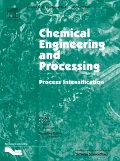
Chemical Engineering and Processing-Process Intensification
Transforming Ideas into Engineering SolutionsChemical Engineering and Processing - Process Intensification is a leading journal published by Elsevier Science SA, specializing in the multifaceted domain of chemical engineering. With the ISSN 0255-2701 and E-ISSN 1873-3204, this journal stands as a beacon of knowledge, facilitating the dissemination of innovative research from 1984 onwards and continuing through 2024. Renowned for its rigorous peer-review process, it boasts a distinguished reputation, reflected in its top-tier rankings within several fields: Q1 in Chemical Engineering (Miscellaneous), Q2 in Chemistry, and Q1 in Industrial and Manufacturing Engineering. This journal focuses on the advancements in process intensification, which are crucial for optimizing efficiency and sustainability in chemical processes. Although access is not open, the journal serves as an essential resource for researchers, professionals, and students alike who seek to advance their understanding and contribute to the evolving landscape of chemical engineering and process technology. Join a community of innovators driving the future of process engineering through impactful and cutting-edge research.

Membrane and Water Treatment
Transforming Water Treatment Through Research and CollaborationMembrane and Water Treatment is a prominent academic journal published by TECHNO-PRESS, dedicated to the fields of chemical engineering and water science. With an ISSN of 2005-8624 and E-ISSN 2092-7037, this journal aims to disseminate innovative research and technological advancements related to membrane technologies and water treatment processes. Since its inception in 2010, it has steadily contributed to the body of knowledge, achieving a Q3 ranking in Chemical Engineering and a Q4 ranking in Water Science and Technology as of 2023. Positioned within the 35th percentile of its respective categories in Scopus, it serves as a critically accessed platform for researchers and professionals eager to explore cutting-edge methodologies and solutions to water management challenges. Based in South Korea, Membrane and Water Treatment is committed to providing a scholarly environment where interdisciplinary and collaborative research can flourish, ensuring that readers remain at the forefront of developments in this essential field.

NATION
Unveiling the narratives that shape our nations.NATION is a prestigious and influential journal that has been serving the field of Social Sciences and Cultural Studies since its inception. Published by NATION CO INC, this journal offers a platform for innovative research and critical discourse, empowering scholars to explore the complexities of culture, politics, and society. Although currently not an open-access publication, NATION remains a significant resource for researchers and practitioners aiming to stay abreast of the latest developments in the field. With a history of converging years of publication and a notable ranking of #796 out of 1002 in the Scopus Social Sciences_Cultural Studies category—with a percentile of 20%—the journal's contributions continue to play a vital role in academic discussions and cultural critiques. The editorial office is located at 33 Irving Place, 8th Floor, New York, NY 10003, facilitating a dynamic interaction between contributors and the editorial team. By engaging with this journal, academics and professionals can enrich their understanding of crucial cultural phenomena.
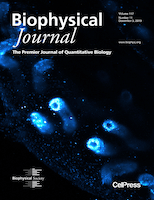
BIOPHYSICAL JOURNAL
Connecting the dots between molecular biology and physics.BIOPHYSICAL JOURNAL, published by CELL PRESS, is a leading interdisciplinary platform dedicated to advancing the field of biophysics. With an ISSN of 0006-3495 and an E-ISSN of 1542-0086, this esteemed journal has garnered a prestigious position within the academic community, reflected in its ranking as Q1 in Biophysics for the year 2023. Its Scopus rank of #44/152 in the category of Biochemistry, Genetics, and Molecular Biology showcases its significant influence, with a notable percentile of 71st. Since its inception in 1960, the journal has published cutting-edge research that explores the quantitative and qualitative aspects of biological phenomena, making it essential for researchers, professionals, and students in the field. While the journal operates under a subscription model, its rigorous peer-review process ensures the highest quality of published work, contributing to groundbreaking discoveries and innovations that shape the future of biophysics. For more information or to explore the latest research, please visit the journal’s platform.

Biochemistry Moscow Supplement Series A-Membrane and Cell Biology
Navigating the Evolving Landscape of BiochemistryBiochemistry Moscow Supplement Series A-Membrane and Cell Biology, published by PLEIADES PUBLISHING INC in the United States, is a pivotal journal in the fields of biochemistry, biophysics, and cell biology. Established in 2008, this journal has become a significant platform for disseminating novel research findings and reviews, fostering advanced studies in membrane dynamics and cellular processes. Although currently ranked in the Q4 quartile across its categories, the journal provides researchers and professionals with open access to a wealth of knowledge, helping to bridge gaps in understanding complex biochemical mechanisms. The journal’s commitment to quality and relevance is evident as it continues to contribute to the academic community through its coverage of innovative and emerging topics in cell and membrane biology. Researchers, practitioners, and students alike will find this resource invaluable for keeping abreast of the latest developments in the ever-evolving landscape of biochemistry and cellular research.

Filtration + Separation
Exploring Cutting-Edge Technologies in Separation ProcessesFiltration + Separation is a distinguished journal published by MA HEALTHCARE LTD, specializing in the fields of filtration technology, separation processes, and their applications within environmental science and industrial engineering. With a commitment to advancing knowledge in these critical areas, this journal, established in 1970, has consistently provided a platform for innovative research and developments, catering to the unique challenges of the filtration and separation industry. Despite its recent categorization in the Q4 quartile across various fields, including Environmental Science and Industrial Engineering, it remains pivotal for researchers and professionals seeking to stay abreast of emerging trends and technologies. The journal is accessible through traditional subscription models and aims to bridge the gap between academic research and practical applications. As the industry evolves, Filtration + Separation continues to serve as an invaluable resource for both seasoned experts and budding scholars passionate about enhancing separation processes and environmental sustainability.
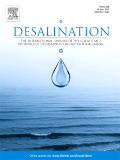
DESALINATION
Exploring the future of water resources through cutting-edge research.DESALINATION, a leading journal in the field of water science and technology, is published by Elsevier and has been a pivotal resource since its inception in 1966. With its commitment to advancing the disciplines of chemical engineering, materials science, and mechanical engineering, this journal boasts an impressive impact factor, reflecting its esteemed position in category quartiles, as it ranks in the Q1 tier across various fields including Water Science and Technology and Chemical Engineering. Researchers rely on DESALINATION for its cutting-edge studies and comprehensive reviews that address critical challenges in desalination methods and water treatment technologies. Operating in a non-open access format, the journal ensures high-quality peer-reviewed articles are readily accessible to professionals and academics seeking to enhance their understanding of water resources and sustainable practices. Its Scopus rankings place it among the top 10% in multiple applicable domains, making it an essential archive for ongoing research and innovative solutions aimed at addressing global water scarcity.